Humility Lesson Plan

Lesson Plan Mindmap for Humility ” Click to Enlarge
CLICK ICONS TO JUMP DIRECTLY TO EACH SUBJECT ON THIS PAGE








HUMILITY LESSON PLAN
This page is a free-shared lesson plan archive for teaching all educational subjects within the context and theme of “Humility”. It is purposed for use in community education environments, homeschool environments, traditional schooling environments, or as a supplemental and fun addition to any education program. As part of the complete Education for Life Program, this lesson plan is specifically designed to work in conjunction with the other components: Foundations of Teaching, Curriculum, Teaching Strategies, Learning Tools and Toys, Evaluation Model, and The Ultimate Classroom. If you’d like to learn how all these components work together, click here. Click here for the specifics focused on just using the lesson plans:
CLICK HERE FOR A DETAILED TUTORIAL ON HOW TO USE THIS LESSON PLAN
NOTE: The colors are provided as a possible linear progression (red/easiest to violet/most challenging) for people that might prefer a more linear structure. Our core philosophy, however, is that through creativity every color can be made easy or challenging for any learning level.
RELATED PAGES (mouse-over for descriptions and click for complete pages)
EDUCATION OVERVIEW | HOW TO USE THIS COMPONENT | OUR OPEN SOURCE PURPOSE










WAYS TO CONTRIBUTE TO EVOLVING THIS EDUCATION PROGRAM WITH US
SUGGESTIONS | CONSULTING | MEMBERSHIP | OTHER OPTIONS
A NOTE ABOUT ALL ONE COMMUNITY LESSON PLANS
The One Community lesson plans are intentionally designed for use in ANY educational environment and with ALL educational, cultural, religious/spiritual, and philosophical approaches to teaching and learning. They are designed without an ideological approach and specifically so they can be adapted to include the views, preferences, methodologies, and/or ideologies preferred by different parents and teachers.
For maximum flexibility and adaptation, they are also designed to be combined to teach multiple subjects at the same time. Doing this increases the creativity, effectiveness, and fun of your learning environment. Once we are on the property and operating our version of the complete school and Education for Life program, we will be adding video examples of how to combine the lessons. In the meantime, visit the Teaching Strategies page for a list of suggestions.
ARTS AND TRADES
CLICK HERE FOR THE COMPLETE SUBJECT OUTLINE FOR ARTS & TRADES
 |
TEACHING ARTS AND TRADES WITHIN THE CONTEXT OF HUMILITY
|
|

|
The Arts
- Dance the word humility with a friend*, e.g. where you take turns dancing each letter and after you each dance a letter* you crawl between the legs of the other, before dancing the next letter.
- Build a clay figure* of someone you feel that is more ‘powerful’ than you.
- Discuss* a topic with someone who knows more about the topic than you do and let the person ask you 10 questions that you probably don’t know the answer to. If you don’t know the answer say “i don’t know” and let the person tell you the answer*.
- Draw a picture* of what humility feels like to you.
- Tell a group* about a mistake you made in the past or something you regret.
- Take a full body picture of yourself and draw a portrait* of yourself, drawing it with smaller proportions than your normal self.
- Craft a blindfold* and play hide and seek with your friends in an area adults say is safe to do so while blindfolded.
- Create a conceptual artwork* about the relation between body image and feeling inferior or superior.
- Take 10 pictures* of people from a low angle as if they were giants, and from a high angle as if they were tiny, and put on display for people to see and discuss*.
- With your parent’s permission, let yourself receive a haircut* while you are blindfolded and without discussing a desired style beforehand.
- Pick up somebody else’s plastic trash and create a decorative piece of art* out of it.
- Cook a meal for five people* doing all the work from cooking to cleaning up by yourself.
- Organize a classical family group photo shoot and photoshop* the pictures to make small people appear tall and tall people appear small, then frame the pictures and hang them*.
- Learn magic tricks to perform a magic show* in front of a big group of people focusing on magic tricks that involves volunteers.
- Draw an architectural design of a skyscraper* and let it be reviewed by a professional to tell you what can be done better.
- Plan, prepare and execute a stand up comedy act* about being humble and laughing about one’s mistakes.
- Create a pastry recipe that represents yourself* and present it to a famous/popular regional pastry store.
- Create a stop motion short movie* about what occurs when there is humility in your community.
- Write an essay* about light design and the effects on how they make people appear more attractive, powerful, etc.
- Create a mosaic picture* of a historical humble figure out of many pictures of yourself or friends and share over the world wide web.
- Attend a world class seminar of an artform that you think you are really good at/interested in and write a paper* about all the things you learned from other people there or about people that you admired there.
- Write a book* about the values and the effects of humility on the human character and submit to a world known publisher.
|
|

|
Trades
- List 5 different examples* on learning how to act more humble while completing a task.
- Explore in nature* which forces and materials are bigger/more powerful than you.
- Recognize, note down, and share* areas you want to improve in your communication.
- Find someone to teach you about seed preparation and planting and become their student*.
- Invent a fictional story* about a character turning from having a big ego to becoming humble and create puppets that represent each version of the character’s ego.
- Stencil a poem or quote* about not knowing everything and why it is good not to know everything onto a recycled item.
- Create a carved wooden piece* that displays a quote about being humble.
- Design and create a textile/piece of clothing* to give it to a homeless/person in need and compliment the person.
- Create an item* that you feel represents being grateful for what you have received from others in life.
- Clean another person’s home* for nothing in return but thankfulness.
- Volunteer at a local fire department* for a course of CPR.
- Write a local article* about people using services of trades within the community and feeling grateful for individuals offering them.
- Volunteer at a regional farm and write an essay* about the humble countryside life compared to living in a city.
- By using cinematic design*, organize a regional talk and collaboration platform* to raise money for a trade of your choice.
- Create a computer guided presentation* about how humans’ relationship to pets makes them either more or less humble and happy.
- Write a dissertation* about how world class skilled people have come to that level by always staying humble and continuing to learn from others despite their level.
|
|
CLICK HERE TO EMAIL US IF YOU HAVE AN IDEA TO ADD TO THIS SECTION |
* Please note that anything with an asterisk is just a suggestion. The diversity of options with asterisks are interchangeable and purposed to stimulate your own ideas. Any one of these suggestions could be replaced with a written paper, any form of art project (drawing, painting, music, paper mache, clay, wood, knitting/embroidery, metals, etc. etc.), an experiment, a presentation, a mindmap, a computer program, a web design project, a piece of poetry or a song, an interpretive dance or play, a group project, or anything else. What we feel is most important is that both the Learner and the Teacher agree on an exercise/activity they both feel would be maximally engaging, fun, and effective. If you come up with an idea we haven’t already thought of, please share it with us.
ENGLISH
CLICK HERE FOR THE COMPLETE SUBJECT OUTLINE FOR ENGLISH
Note: Any language can be substituted for English. The subject is listed here as “English” because that is the primary language of most of the people on the team, and the official language of the country we’re building our initial location in.
 |
TEACHING ENGLISH WITHIN THE CONTEXT OF HUMILITY
|
|

|
- Learn 10 new adjectives* to give people compliments with.
- Create a comparison chart* between polite/honorific and casual language/words.
- Write two short dialogues* of two strangers with the same content of dialogue, where one of the dialogues has a negative outcome and one a positive one because of use of language.
- Read a real story of colonial times from the perspectives of both sides of a story/event and write an essay* combining the two views.
- Conduct interviews with locals of different ‘classes’ (working, lower, middle, upper middle and upper) on the subject of humility and write an article* on what being humble means to them in their daily life.
- Read the biography of a famous humble personality in history* and write an evaluation* of the philosophical, political, religious, ethical, and social influences of that character on the historical period* that shaped the characters, plots, and settings.
- Write a dissertation* on the influence of humility of today’s and future businesses and their missions, visions and values not seeing each other as competitors but as collaborators and open source the dissertation* over a platform making people aware of the benefits of open sourcing ideas.
|
|
CLICK HERE TO EMAIL US IF YOU HAVE AN IDEA TO ADD TO THIS SECTION |
* Please note that anything with an asterisk is just a suggestion. The diversity of options with asterisks are interchangeable and purposed to stimulate your own ideas. Any one of these suggestions could be replaced with a written paper, any form of art project (drawing, painting, music, paper mache, clay, wood, knitting/embroidery, metals, etc. etc.), an experiment, a presentation, a mindmap, a computer program, a web design project, a piece of poetry or a song, an interpretive dance or play, a group project, or anything else. What we feel is most important is that both the Learner and the Teacher agree on an exercise/activity they both feel would be maximally engaging, fun, and effective. If you come up with an idea we haven’t already thought of, please share it with us.
HEALTH
CLICK HERE FOR THE COMPLETE SUBJECT OUTLINE FOR HEALTH
 |
TEACHING HEALTH WITHIN THE CONTEXT OF HUMILITY
|
|

|
- Answer the following question:* How does/could being humble help you increase happiness and/or health within your circles of family and friends?
- Find 5 people who can give you a health tip related to humility, each you didn’t know about before (emotional/mental, nutritional, physical, spiritual) and create a list* to share with others.
- Find a coach/friend who can guide you on setting up a dietary plan* according to your needs.
- Identify 3 typical situations that result in a so called “ego eruption” and see how practices of humility can make you understand the reason they come up and how to control them, and create an infographic* to share it with others.
- Write an essay* about how different positions in local team sports are lower or higher valued/ within a team and perceived from the outside.
- Create a media guided presentation* on how people form deep/intimate relationships and function well in diverse social environments/communities by practicing humbleness/appreciation.
- Write a dissertation*on how doing too much for others/for yourself can be detrimental to your physical, mental and emotional health.
|
|
CLICK HERE TO EMAIL US IF YOU HAVE AN IDEA TO ADD TO THIS SECTION |
* Please note that anything with an asterisk is just a suggestion. The diversity of options with asterisks are interchangeable and purposed to stimulate your own ideas. Any one of these suggestions could be replaced with a written paper, any form of art project (drawing, painting, music, paper mache, clay, wood, knitting/embroidery, metals, etc. etc.), an experiment, a presentation, a mindmap, a computer program, a web design project, a piece of poetry or a song, an interpretive dance or play, a group project, or anything else. What we feel is most important is that both the Learner and the Teacher agree on an exercise/activity they both feel would be maximally engaging, fun, and effective. If you come up with an idea we haven’t already thought of, please share it with us.
MATH
CLICK HERE FOR THE COMPLETE SUBJECT OUTLINE FOR MATH
 |
TEACHING MATH WITHIN THE CONTEXT OF HUMILITY
|
|

|
- Make a numeral list* of all items you possess, and give away 3 of them.
- Create a graph* of an estimated hourly, monthly, and yearly wage of working, lower, middle, upper middle and upper class citizens.
- Identify different materials in context of their money worth and in a chart* compare this to different measurement units within a given measurement system.
- Draw, construct & describe geometrical figures* that correlate to the development of the gross domestic product of 6 different countries that are wealthier/poorer than the one you live in.
- Create a pie chart* of the distribution of wealth in your local area between people and find the arc lengths of sectors of the pie chart.
- Create a graphic* by visualizing the relationships between two-dimensional and three-dimensional objects* in order to make somebody able to understand basic economics and globalization (focusing on regional events).
- Write a dissertation* on the use of mathematics to understand atomic structures and their standpoint in correlation to the size of humans and the size of the universe (how small/big everything is in comparison).
|
|
CLICK HERE TO EMAIL US IF YOU HAVE AN IDEA TO ADD TO THIS SECTION |
* Please note that anything with an asterisk is just a suggestion. The diversity of options with asterisks are interchangeable and purposed to stimulate your own ideas. Any one of these suggestions could be replaced with a written paper, any form of art project (drawing, painting, music, paper mache, clay, wood, knitting/embroidery, metals, etc. etc.), an experiment, a presentation, a mindmap, a computer program, a web design project, a piece of poetry or a song, an interpretive dance or play, a group project, or anything else. What we feel is most important is that both the Learner and the Teacher agree on an exercise/activity they both feel would be maximally engaging, fun, and effective. If you come up with an idea we haven’t already thought of, please share it with us.
SCIENCE
CLICK HERE FOR THE COMPLETE SUBJECT OUTLINE FOR SCIENCE
 |
TEACHING SCIENCE WITHIN THE CONTEXT OF HUMILITY
|
|

|
Life Sciences
- Identify and discuss* 10 plants that are bigger compared to you, when measuring one physical attribute per plant (e.g., shape, size, weight).
- Use numerical data to create a chart* describing and comparing humans to 20 other species of the past and present with a longer lifespan than humans. Include species wide life altering events, and physical properties and measurements of that species.
- Create a food chain pyramid* of 50 lifeforms in your local environment.
- Construct appropriate graphs from data and develop written qualitative statements* about the dependency of humans on smaller organisms to live and function within the ecosystem.
- Create a multimedia presentation* identifying the strongest muscles, bones and ligaments in the human body compared to their relative size, in comparison to 5 species that are superior to humans in that regards.
- Investigate the science-based societal issue of population control and fluctuation by researching accredited scientific literature, analyzing data, and communicating and presenting* the findings at a relevant regional event.
- Create, execute, and write a scientifically valid dissertation or published research study* about the current point of progress of the human species and what is expected/likely to come next.
|
|

|
Physical Sciences
- List and compare* 10 common materials that are stronger than the human bone.
- Research the theories of why/when it is dangerous to look into the sun and draw a picture* that shows 5 conclusions based on science and practical experiences of people (e.g. sensitive eyes, blindness, etc.).
- Write a thesis statement about how much people are faster or slower than you in the 100 meter run and why you think that may be the case. Conduct an investigation* with yourself and 5 people, including conducting tests, collecting data or examining evidence, and drawing conclusions that you write in a report*.
- Design an infographic* about what you believe are the logical connections between hypotheses, science concepts, tests conducted, data collected, and conclusions drawn from scientific evidence* regarding the gravitational pull on humans which binds us to Earth.
- Construct appropriate graphs from data and develop quantitative statements* about the relationships between the acid and base balance our human body needs to function and the provided food by local manufacturers supporting that balance or not.
- Select and use appropriate tools and technology to perform tests, collect data, analyze relationships, and display data* on current regional exposure of the community to electric and magnetic fields and their effects on the human body.
- Research and create a scientifically valid lesson* about how nuclear energy affected the global environment and its inhabitants throughout the past, present, and the effects it might have in the future.
|
|

|
Earth Sciences
- List 5 different things* for each season of the year that humans have to do to adapt to weather and climate. Try to explain* why we need seasons and are dependent on the different seasons.
- Draw a mindmap* of the natural resources that humans need to survive and are dependent on. Emphasize how humans beings are only a small part of the planet (e.g. you could depict it in a pyramid structure from most and least important).
- Construct and interpret graphs from measurements* about how in daily life, energy is drawn from the sun, ways humans benefit from and use it, what humanity might be like without it and how humans can’t live without it.
- Read a topographic map and a geologic map for evidence provided on the maps for the rock cycle, its effects on climate change and the possible end of human life and then construct and interpret a simple scale map.*
- Evaluate the accuracy and reproducibility of data on the types of stars that exist, (size, temperature and color) and calculate and create a guide* for the criteria for humans to be able to live on planets that orbit each type (distance from the star, orbital and rotational speeds, planet size, magnetic field, etc.). Discuss if humans are actually capable of living on different planets.
- Analyze and create an educational pamphlet* about the locations, sequences, or time intervals that are characteristic of regional volcanoes (e.g., time of inactivity, possibility of turning active) and their effects on life near them. Take into account the effects that active volcanoes had on people and their humility (e.g. forced to move away).
- Create, execute, and write a scientifically valid dissertation or published research study* on the global issue of possible environmental engineering with the goal of preventing detrimental climate changes, and the possible humility such effects could cause the human population to feel.
|
|
CLICK HERE TO EMAIL US IF YOU HAVE AN IDEA TO ADD TO THIS SECTION |
* Please note that anything with an asterisk is just a suggestion. The diversity of options with asterisks are interchangeable and purposed to stimulate your own ideas. Any one of these suggestions could be replaced with a written paper, any form of art project (drawing, painting, music, paper mache, clay, wood, knitting/embroidery, metals, etc. etc.), an experiment, a presentation, a mindmap, a computer program, a web design project, a piece of poetry or a song, an interpretive dance or play, a group project, or anything else. What we feel is most important is that both the Learner and the Teacher agree on an exercise/activity they both feel would be maximally engaging, fun, and effective. If you come up with an idea we haven’t already thought of, please share it with us.
SOCIAL SCIENCES
CLICK HERE FOR THE COMPLETE SUBJECT OUTLINE FOR SOCIAL SCIENCES
 |
TEACHING SOCIAL SCIENCES WITHIN THE CONTEXT OF HUMILITY
|
|

|
- Identify and discuss* 5 situations where you felt humility, talking about what you and others thought and felt in that situation and why.
- Write down* what humility means to you and how you can use it for positive social and educational purposes.
- Discuss and create a short pamphlet* of strategies for working in and managing groups, in terms of taking positions that are considered higher and lower.
- Create a manual* that conveys social norms that exist in your culture that require being humble, modest, and/or polite.
- Organize a local workgroup* to compare group thinking (thinking of others) versus individual thinking (thinking of oneself) and identify how participating in group thinking could be considered a practice in humility.
- Create and give a media guided presentation* on the practice of humility and ‘respecting all things,’ and the benefits for everyone at a related regional event.
- Start an international project* on the ‘never ending process of learning from each other,’ in terms of seeing people as teachers of life experiences. Plan relevant S.M.A.R.T. goals to deliver results.
|
|

|
Foreign Languages
(Each of the following is to be completed in the foreign language(s) being studied)
- Learn words* for different humility related concepts and identify why we use them.
- Read & write* with words for humility related concepts.
- Explore* humility in fiction.
- Explore & create different types of literature* in relation to the topic of humility.
- Compose a new piece of literature* about the topic humility.
- Explore the complete history and the etymology* of humility.
- Write a dissertation level paper* on the meaning of humility.
|
|
CLICK HERE TO EMAIL US IF YOU HAVE AN IDEA TO ADD TO THIS SECTION |
* Please note that anything with an asterisk is just a suggestion. The diversity of options with asterisks are interchangeable and purposed to stimulate your own ideas. Any one of these suggestions could be replaced with a written paper, any form of art project (drawing, painting, music, paper mache, clay, wood, knitting/embroidery, metals, etc. etc.), an experiment, a presentation, a mindmap, a computer program, a web design project, a piece of poetry or a song, an interpretive dance or play, a group project, or anything else. What we feel is most important is that both the Learner and the Teacher agree on an exercise/activity they both feel would be maximally engaging, fun, and effective. If you come up with an idea we haven’t already thought of, please share it with us.
TECHNOLOGY AND INNOVATION
CLICK HERE FOR THE COMPLETE SUBJECT OUTLINE FOR TECHNOLOGY AND INNOVATION
 |
TEACHING TECHNOLOGY & INNOVATION WITHIN THE CONTEXT OF HUMILITY
|
|

|
Technology
- Find 5 apps* that help you with improving one or more areas of your life.
- Pick a piece of software/hardware technology* that you feel you know well and find a way to learn something about it from someone you consider less knowledgeable than you are. Be humble during the process and discuss what effects this had on your success and why it is important to be open to others advice no matter their level of experience.
- Create a blueprint* of how to use the internet as a resource to get advice on anything.
- Create a group podcast* on humility with the focus on being more humble and grateful and how it is received better or worse than boasting or complaining.
- Gather data on local implementation and usage of transportation systems and create an online resource* that evaluates importance of that system for the daily life of locals. Share the following findings/data selflessly* via open source to make it accessible to the public.
- Organize a team and take part in* a ‘For Inspiration and Recognition of Science and Technology’ (FIRST) Team competition, or other similar technology based team event.
- Write a dissertation* creating an argument that ‘the internet was the biggest technological advancement of the 21st century’ making the world smaller than before and making people bigger by giving them a tool to reach out further focusing on people reshaping their use and perception of information technology. Incorporate the aspect of the power of sharing information and freedom of speech in terms of possibly exposing/humiliating yourself or others to the public.
|
|

|
Innovation
- Find a partner and ask* him/her about their innovative ideas. Practice humility while listening by listening with highest focus and not speaking for as long as it takes for your partner to be complete.
- Listen intently* while somebody tells you a story of a time they felt humility. Practice humility while listening by having your eyes closed and focusing on visualization and being in the other person’s skin rather than trying to interject your thoughts during the story.
- Find a person that has more life experience than you* and ask for advice* for an issue you are facing and about suggestions and ways to tackle it.
- Create a questionnaire/test form* on the subject of how people prepare themselves for tests where competing with others is important (in school, sports, business, etc.) and distribute it to 25-50 people. Then compile the results in a format that is usable to others.
- Create a workgroup and teach others exercises* on how to be more humble.
- Write a summary and an overview* of a book about future human evolution and present your creation at a relevant regional event.
- Write a comprehensive report* on the alignment of goals of top world Change Organizations (such as Tesla motor company, Venus Project, One Community, Buckminster Fuller Institute, Cornucopia Institute, Union of Concerned Scientist, Friends of the Earth). Include your perspective of how each relates to and to what extent each practices humility and create your own outline* of what a world changing organization could look like.
|
|
CLICK HERE TO EMAIL US IF YOU HAVE AN IDEA TO ADD TO THIS SECTION |
* Please note that anything with an asterisk is just a suggestion. The diversity of options with asterisks are interchangeable and purposed to stimulate your own ideas. Any one of these suggestions could be replaced with a written paper, any form of art project (drawing, painting, music, paper mache, clay, wood, knitting/embroidery, metals, etc. etc.), an experiment, a presentation, a mindmap, a computer program, a web design project, a piece of poetry or a song, an interpretive dance or play, a group project, or anything else. What we feel is most important is that both the Learner and the Teacher agree on an exercise/activity they both feel would be maximally engaging, fun, and effective. If you come up with an idea we haven’t already thought of, please share it with us.
VALUES
CLICK HERE FOR THE COMPLETE SUBJECT OUTLINE FOR VALUES
 |
TEACHING VALUES WITHIN THE CONTEXT OF HUMILITY
|
|

|
- Give 5 practical examples* of how humility can affect the value of kindness, warmth and warm heartedness.
- Write a short story* that creates a comparison between the values of humility and modesty and their effects on human behavior.
- Create a short paper* on the action of sharing knowledge to gain new knowledge and demonstrate your understanding that there is always someone more advanced than you in terms of knowledge, experience and wisdom.
- Analyze and write a paper* about how the value of attentiveness teaches you humility and the skill of truly listening and appreciating someone’s input.
- Ask 10 local strangers* about their consumer habits, personal belongings/possessions, and thoughts on being humble and sharing things with others. Create a presentation* on your results, including simple suggestions for the average local person to implement if they wish to ‘easily’ become less materialistic and more sharing.
- Invite 2 or more regional charity organizations to an organized collaborative meeting* that you create. The meeting’s purpose is to share thoughts and ideas about generosity and how to work together towards common goals and take more responsibility within the community.
- Write a dissertation* on ‘big picture thinking,’ deemphasizing personal needs and emphasizing life of generations to come. Focus on the humility aspect on putting others people’s life first compared to doing things for yourself.
|
|
CLICK HERE TO EMAIL US IF YOU HAVE AN IDEA TO ADD TO THIS SECTION |
* Please note that anything with an asterisk is just a suggestion. The diversity of options with asterisks are interchangeable and purposed to stimulate your own ideas. Any one of these suggestions could be replaced with a written paper, any form of art project (drawing, painting, music, paper mache, clay, wood, knitting/embroidery, metals, etc. etc.), an experiment, a presentation, a mindmap, a computer program, a web design project, a piece of poetry or a song, an interpretive dance or play, a group project, or anything else. What we feel is most important is that both the Learner and the Teacher agree on an exercise/activity they both feel would be maximally engaging, fun, and effective. If you come up with an idea we haven’t already thought of, please share it with us.
OTHER RESOURCES
We're building a resource section. Click here if you have a suggestion or resource for this page.
OPEN SOURCE SUBJECT RESOURCES (click icons for complete pages)

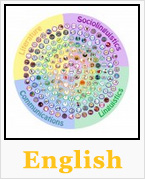

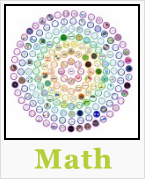


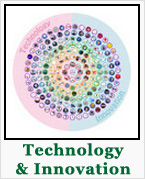
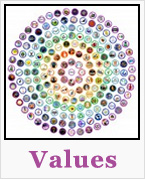
OPEN SOURCE CURRICULUM OUTLINES (click image for summaries and links to complete pages)
CARE




SHARE

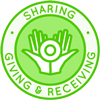


PLAY




OPEN SOURCE TEACHING METHODOLOGY SUMMARIES
Montessori | Waldorf | Orff | Reggio | Multi-Intelligence | Bloom's Taxonomy | Study Tech | I-WE
INDEX OF ALL THE ONE COMMUNITY OPEN SOURCE LESSON PLANS

Click this image for the Lesson Plans for Life page with links to the rest of the lesson plans
THE WORLD'S LARGEST ONLINE FREE EDUCATION RESOURCE ARCHIVE
RELATED CONTENT AND OTHER RELATED RESOURCES
We're building this resource section. Click here if you have a suggestion or resource for this page.
























 One Community
One Community





Connect with One Community